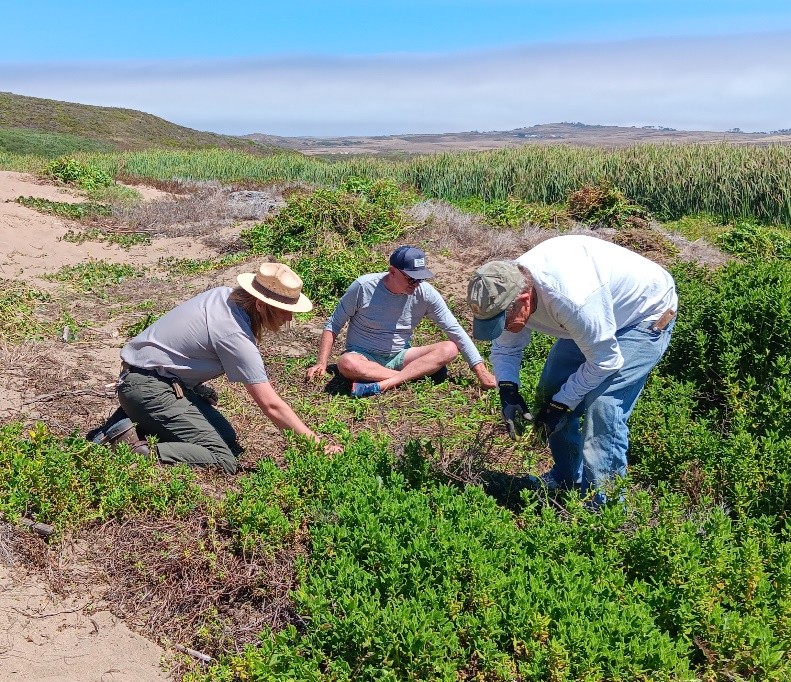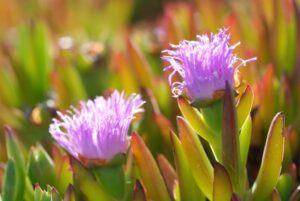Thursday Weeders at Abbotts Lagoon
What is Thursday Weeders?

Our Thursday Weeders program is a drop-in volunteer opportunity hosted in collaboration between NPS and PRNSA that’s held at the Abbotts Lagoon trail and dunes within Point Reyes National Seashore. The goal of the program is to monitor for and remove invasive plants to restore the many plant habitats at the site, while offering participants the opportunity to learn about native plants that grow in the park and the wildlife species they support.
When Can I Join?
Thursday Weeders is held every other Thursday of each month and meets from 10:00am to 2:00pm.
Participants meet at the Abbotts Lagoon trailhead where staff will hand out volunteer agreement forms to sign, as well as work tools, gloves, and snacks. Participants must bring closed-toe shoes, layers for variable weather conditions, and lunch is highly encouraged.
Below are the upcoming dates for the fall season:
- October 16
- October 30
- November 13 (cancelled due to rain)
- November 20
- December 4
While drops-in are welcomed, we encourage participants to register in advance on Eventbrite.
(Please be sure to select a ticket for the dates you would like to attend.)
Why Abbotts Lagoon?

Although NPS and PRNSA are working to restore ecosystems throughout all of Point Reyes, Abbotts Lagoon was chosen for this program due to a combination of extensive restoration work that has already taken place here, ease of accessibility for the public, and the high impact from volunteer contributions towards meeting conservation goals.
Which Plants are Invasive?

European Searocket: A flowering annual plant that has become a priority for removal due to it’s extensive presence following the removal of ice plant and European Dune grass. Although searocket is an annual plant, meaning it completes it’s life cycle in one year, it’s been observed to flower multiple times in a year, leading to increased seed deposits on the dunes that can overwhelm native plants by outcompeting them for sunlight and water.
European Dune Grass: A highly invasive species that was introduced from the Mediterranean region, this dune grass can grow roots that measure over 12 ft long! Due to their rhizomatous structure, these dune grasses can regrow from parts of intact roots left behind, this making them a difficult plant that requires multiple treatments to remove. For best results, we aim to remove newly established dune grass patches to limit their spread so native dune grasses can thrive.

Ice Plant: A common succulent plant that is now found all throughout the West coast, ice plant is highly invasive and is capable of completely taking over dune habitats in a relatively short amount of time. Similar to dune grass, ice plant can regrow from cuttings left behind in the sand, so it’s best to stack it in dense piles to dry out the roots completely.
Questions?
Email PRNSA Volunteer Manager Cristobal Castaneda at cristobalcs@ptreyes.org or call our office at (415)-663-1200 ext. 307.


